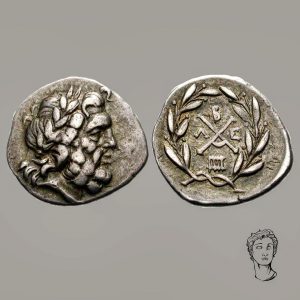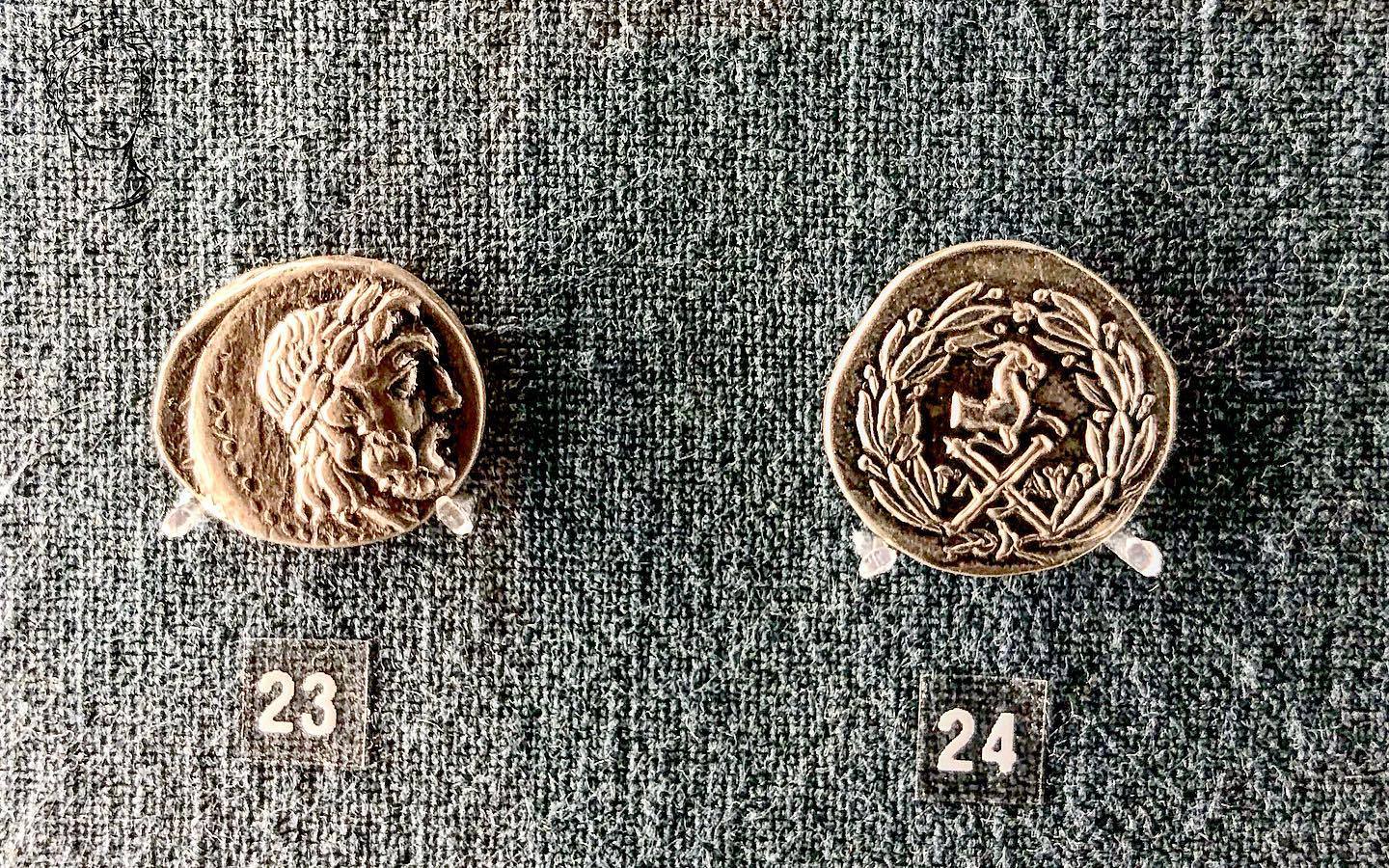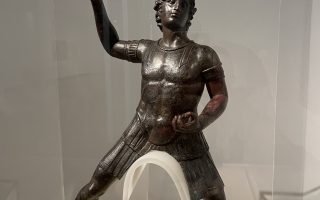Today’s coins are actually two coins posing as one. These silver hemidrachms were minted in two cities that were members of the Achaean League: Megara and Aegira. Read below to find out more about the coins of this Greek federal state!
Silver coins of the Achaean Koinon

Aside from the civic coinage used by member states, there are two major types of Achaian coins: bronze and silver. Even though they were being made by different cities, these coins have a similar design. On the obverse, the head of Zeus Homarios looking right, while on the reverse a laurel wreath surrounds the monogram AX. Aside from the laurel wreath and monogram, a few letters and small are added on the reverse of the coin from Aegira to identify the city and the magistrate who made the coinage.
bronze Achaean coins

The bronze coins, generally in worse condition than the silver ones, were produced in one single minting period after 200 BC and depict Zeus Homarios sitting on a throne being offered a wreath by Nike on the obverse and on the reverse a personification of Achaia holding a wreath. Just as with the silver coins, the bronze ones represent both the federal state and the member city because of the presence of both the legend AXAIΩΝ as well as the polis’ ethnicon and the name of the magistrate (in full or abbreviated).
Coins and identity
In general, coins give us a good idea of how the polis wanted to depict itself to the outside world. They illustrate the presence and the importance of civic identity in Greek poleis during the Hellenistic period as well as before. While we know that individual poleis minted civic coinage throughout Hellenistic times, federal coinage is also accounted for. There is no standard example of what federal coinage looked like as the different nature of these federal states is reflected via their coinage. Coin types from the Aitolian federation, for example, only bear the inscription ΑIΤΩΛΩΝ indicating that the minting of coins
was the sole responsibility of the Aetolian federal government.
The coins of the Achaian federation tell a different story. The fact that both the polis’ ethnicon and the Achaian monogram appear together on the coins indicate that individual member states could operate within the federal framework with a high degree of autonomy and had a lot of input in the decisions taken by the federal state. Issuing federal coinage seems to have been controlled and planned by the federal state as proven by a comment made by the historian and Megalopolitan Polybius in which he says that:
For while many, have attempted in the past to induce the Peloponnesians to adopt a common policy, no one ever succeeding, as each was working not in the cause of general liberty, but for his own aggrandizement, this object has been so much advanced, and so nearly attained, in my own time that not only have they formed an allied and friendly community, but they have the same laws, weights, measures and coinage, as well as the same magistrates, senate, and courts of justice, and the whole Peloponnesus only falls short of being a single city in the fact of its inhabitants not being enclosed by one wall, all other things being, both as regards the whole and as regards each separate town, very nearly identical. (Pol. 2. 37. 11).
But the nature of Achaian federal coins also support Polybius’ statement that within the federation all members were equal and could remain relatively autonomous in the organisation of their own civic affairs AND the expression of their own local identity and interests. Obviously, within the Achaean koinon, cities were allowed to express their local as well as their federal identity. Something that they were eager to do as you can tell by the many coins still surviving today!




